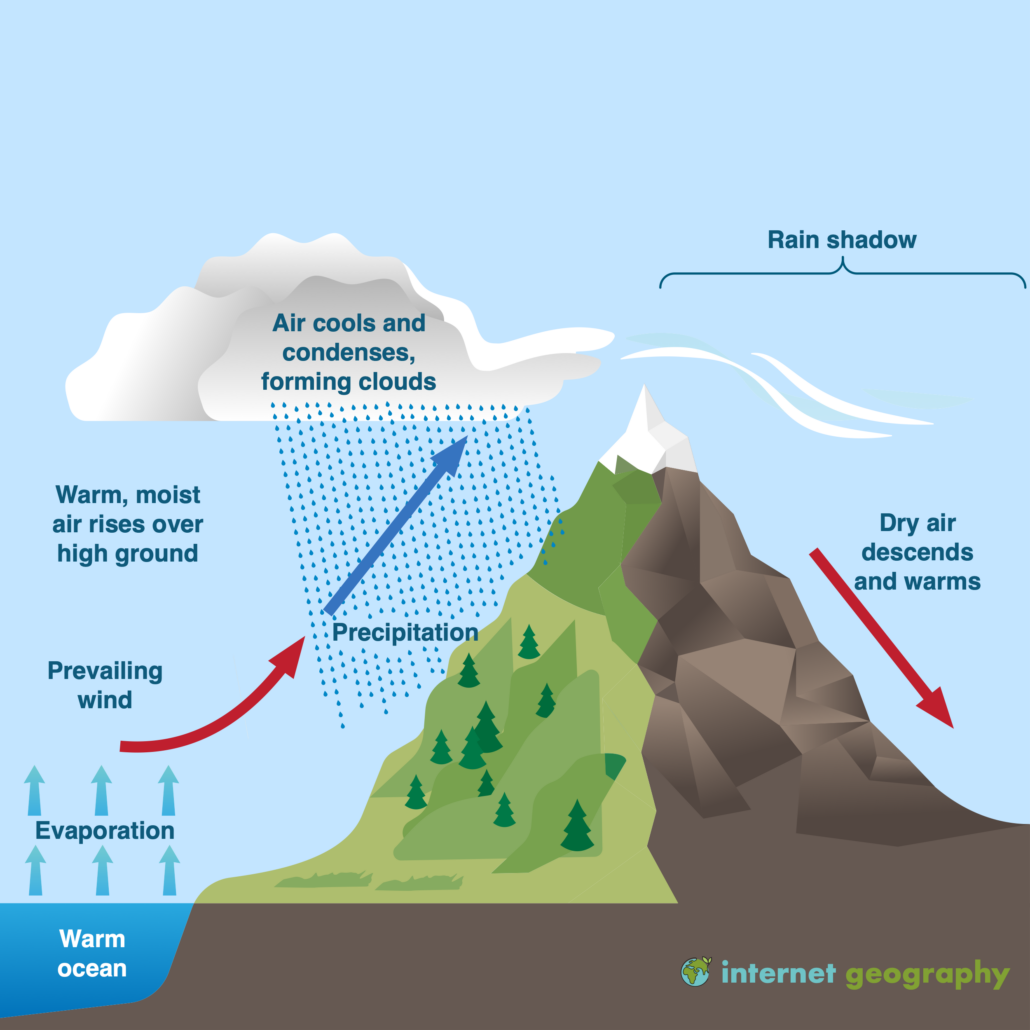How do latitude, relief, aspect and distance from the sea affect local weather conditions?
Latitude, relief, aspect and distance from the sea all affect local weather conditions.
How does latitude affect local weather conditions?
Latitude measures a location’s distance from the Equator, expressed in degrees. The Equator itself is defined as 0 degrees. Locations closer to the North Pole (90°N) and South Pole (90°S), known as high latitudes, are generally colder and drier. Conversely, places nearer to the Equator (0°), referred to as low latitudes, tend to be warmer and more humid.
The reasons for these differences are:
- Seasonal Changes: In higher latitudes, seasonal variations are more pronounced. Summers can be warm, while winters are usually cold and harsh.
Near the Equator, daylight and temperature remain fairly constant throughout the year.
Ocean Currents: - Ocean Currents: The latitude of a region affects the temperature of nearby ocean currents, which can further influence the local climate. For example, warm ocean currents may raise temperatures in higher latitudes, while cold currents can cool down tropical regions.
- Presence of Ice and Snow: In high latitudes, ice and snow reflect sunlight, leading to a cooler climate.
- Flora and Fauna: The dense, dark vegetation of the tropical rainforest close to the equator absorb heat contributing to higher temperatures, compared to the snow and ice at the poles that reflect the sun’s heat, making it colder.
- Solar Energy: Areas near the Equator generally experience hot and humid conditions all year round. This is because the sun’s rays strike these regions more directly, concentrating more solar energy (see the image below). Moving away from the Equator, the climate becomes more moderate with distinct seasons. The sun’s rays are more spread out, so temperatures are cooler than in tropical regions. Within polar regions, the sun’s rays are spread out and hit the Earth at a shallow angle, leading to much colder temperatures.
Therefore, temperatures are higher in southern England than in the north of Scotland, mainly due to latitude.
Latitude also affects rainfall. Places near the equator receive more precipitation (rain) due to low-pressure zones, which result in warm, moist air rising and condensing leading to convection rainfall.
Places near the North and South Poles receive less precipitation due to high pressure causing cold air to sink. In the UK, rainfall is less influenced by latitude due to various factors, including distance from the sea and relief.
How does relief affect local weather conditions?
Relief in geography refers to the height and shape of the land. In flat, low-lying areas, temperatures are typically warmer since temperatures drop by an average of 10°C for every 1000 meters in altitude. This temperature decrease at higher elevations occurs because there are fewer solid particles in the upper atmosphere to hold heat, causing more heat to be lost to space. As a result, places at higher elevations are generally colder and receive more precipitation.
In the context of the UK, the western regions are characterised by higher land, leading to increased rainfall there. The reasons for these variations in rainfall across the UK are as follows:
- Prevailing Winds: The dominant winds come from the southwest, gathering moisture from the Atlantic Ocean.
- Elevation of the Land: As these moist winds reach the higher land in the west of the UK, the air is forced to rise.
- Cooling and Condensation: When the air ascends, it cools, leading to condensation and the formation of water droplets.
- Growth of Water Droplets: Continued condensation causes these water droplets to grow in size within the clouds.
- Rainfall: Eventually, the clouds become saturated, causing them to burst, and rain falls.
- Sinking Air and Warming: Where the land’s height decreases, the air sinks and warms, leading to drier weather conditions on the UK’s east coast.
How does aspect affect local weather conditions?
Slopes facing the sun are warmer than those that are not. Therefore, south-facing slopes in the northern hemisphere are usually warm. However, slopes facing north in the southern hemisphere are warmest.
How does distance from the sea affect local weather conditions?
Land heats and cools faster than the sea. Therefore coastal areas have a lower temperature range than those areas inland. On the coast, winters are mild, and summers are cool. In inland areas, temperatures are high in the summer and cold in the winter. Despite Aberdeen and Fort Augustus being on similar lines of latitude, Aberdeen experiences much milder winters and cooler summers than Fort Augustus due to its proximity to the sea.
Summary
Flashcards
Check Your Knowledge
Drag and drop the text to explain temperature differences caused by latitude.
Drag and drop the text to explain weather differences caused by relief.
Based on their distance from the sea, what are the winter temperature differences between the two locations likely to be?


